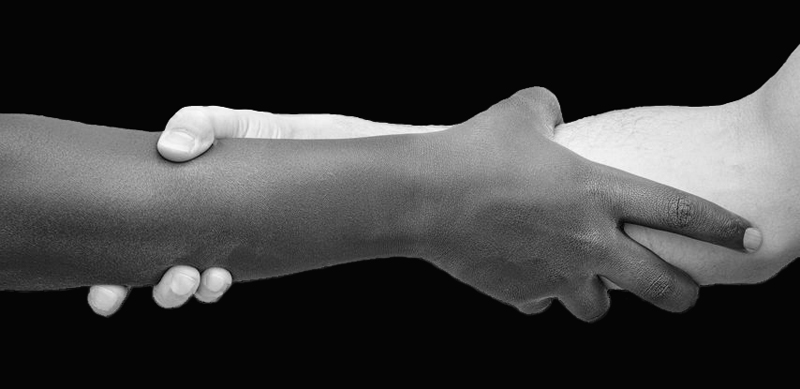
In the four years since this piece was originally published, issues around race and systemic racism in the United States have only become more pressing. Now, in the summer of 2020, following the murder of George Floyd and so many others, daily protests and uprisings persist across the country in the name of racial justice. The roots of this nation with regard to slavery of Blacks, and genocide and displacement of Indigenous peoples, are being reckoned with once again—and for many Whites, perhaps for the first time in a serious way. It feels like we’re approaching a tipping point in consciousness, as an increasing number of people across races and identities work toward the promise of an America that “never has been yet.”
The role of implicit bias, as explored in this piece, is still a key construct to understand when it comes to race. This is part of a deeper understanding of how our minds work, and how they can both contribute to—and help solve—critical societal problems. The possibility for contemplative practices to reduce our automatic associations and biases has continued to be studied, with promising results beyond what was cited in the original piece (for a few examples, see these findings on how loving-kindness training persistently reduced implicit bias and how mindfulness training reduced automatic responding).
Even so, as described by civil rights expert john powell in a recent Mind & Life podcast episode, changing bias is deeply challenging and depends on more than the individual; we must also examine and shift our social and cultural environments. It’s clearer than ever that the work before us must happen at all levels—from shaping individual minds, to changing societal norms, to creating inclusive and just policies, structures, and institutions. I hope that the information in this essay might be a small drop in the rising tide toward true equality.
– Wendy Hasenkamp
Original post from July 19, 2016
Trayvon Martin. Eric Garner. Michael Brown. Freddie Gray. Sandra Bland. Ferguson. Baltimore. Charleston. Alton Sterling. Philando Castile. In the wake of so many recent tragedies involving racial discrimination, Americans are taking a hard look at this systemic and divisive issue in our culture, and asking what can be done to change it.
Most of us like to think that a person who is sensitive to racial issues—who believes firmly that all races should be treated equally—is a person who is not under the sway of racism. In other words, someone who is against racism is (by definition) not racist.
Unfortunately, this often isn’t true. Our consciously held beliefs don’t always agree with our long-held mental and behavioral patterns. As a result of our country’s history, our society, culture, media, and power structures continuously feed us subtle (and not sometimes not so subtle) racist messages. From systematic discrimination within police and legal systems, to biased portrayal of Blacks in the media, to the tacit implication when someone avoids a Black person by crossing to the other side of the street, negative stereotypes of Black people are constantly being reinforced, even as many work to change them.
These messages, especially when repeated over time, create associations in our minds that instill prejudice without us even knowing it. This is the insidious “implicit bias” that exists in much of American culture. Just by operating in our society, we develop and reinforce concepts in our minds—and our brains—that automatically link the category of “Black” with “bad,” “dangerous,” or generally “less than,” even if we don’t believe these ideas consciously. It’s nearly inescapable.
Re-writing policies and making other explicit societal changes in favor of racial equality is hugely important. But if we want to change the way race is perceived in our culture, we need to be aware of, and work to shift, our associations at the implicit level as well.
Probing Bias
Of course, if you ask someone whether they ascribe to racist beliefs, you can imagine their reply. Either they will be completely unaware of the implicit biases they hold, or they will be consciously biased but unlikely to admit it because of the social stigma against racism. In both cases, the person will probably claim not to be racially biased. Thus, this kind of explicit measurement just isn’t accurate.
Social psychologists have developed clever ways to “look under the hood” and probe unconscious systems. One of the tools scientists use to study this phenomenon is the implicit association test (IAT), which was designed to measure the strength of association between concepts in memory. In this computerized test, participants are asked to categorize two sets of stimuli as fast as possible according to the instructions. To probe racial bias, one must assign Black or White faces into positive or negative categories.
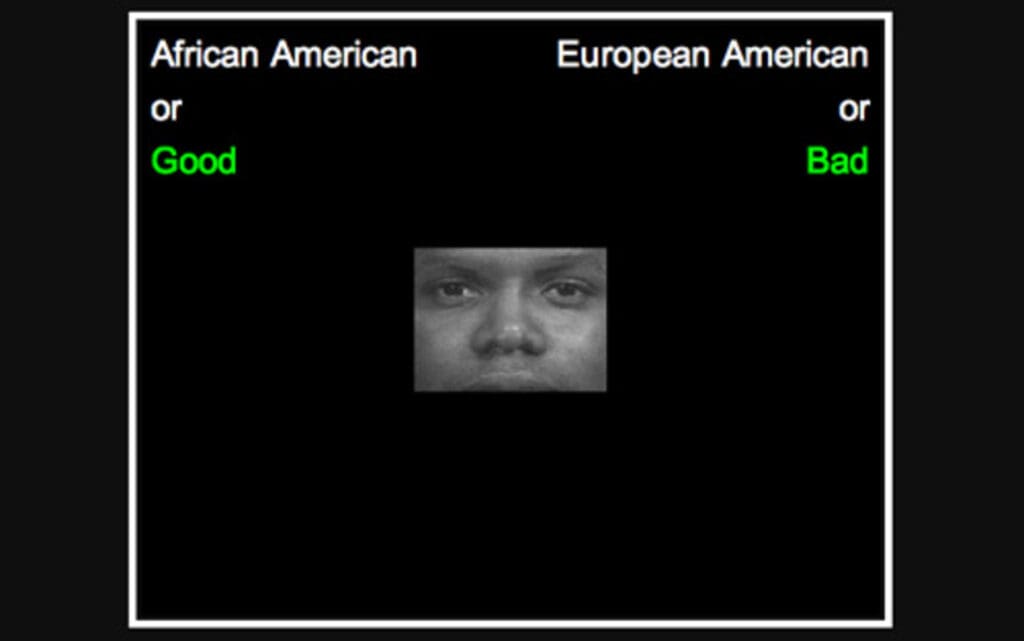
An example of the IAT, where a participant would have to sort the face into the left or right category.
The idea is that if someone has an implicit bias against Blacks (e.g., they associate “Black” with “Bad”), he or she will take longer to press a button to assign Black faces into a positive category. The delay is a result of the brain being slightly slower to process this association, because it runs counter to the existing concept. Along the same lines, he or she would be faster to categorize White faces as positive, because this agrees with the existing concept in their mind.
Implicit racial bias is well-known in the research world, and it’s pervasive. Using the IAT, Harvard’s Project Implicit reported that 88 percent of White Americans hold implicit bias against Black people. Perhaps more disturbingly, 48 percent of Black people hold the same bias against their own race. Notably, these biases are not strongly correlated with people’s explicit reports of their attitudes about race, suggesting the biases are operating without awareness.
But it’s not just beliefs that are biased. Even though these associations may be unconscious, they affect our decisions and behavior towards others. For example, research has shown that people with higher implicit positive bias toward Whites (measured through the IAT) make economic decisions that are more disadvantageous to Black people, deliver fewer treatments to Blacks seeking medical care, and have more negative social interactions with Blacks.
Evidence of racial bias is also reflected in our brains. An important early neuroimaging study scanned the brains of White Americans while they viewed unfamiliar Black vs. White faces. Researchers were specifically interested in the amygdala, a brain region associated with processing highly salient and/or threatening stimuli. They found not only that amygdala activity was higher for Black faces than for White faces, but the level of participants’ amygdala activation was correlated with their level of implicit bias against Black people. In other words, the more racially biased people were, the more their amygdala responded to Black faces. Importantly, brain activity was not correlated with explicit, self-reported measures of race attitudes. This and other studies finding similar results have been interpreted to mean that Black faces, (particularly males) are perceived by the brain as more threatening than White faces, reflecting culturally-learned associations.
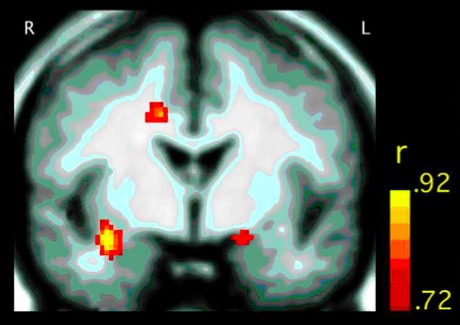
Brain regions where activity levels correlated with implicit bias against Blacks; left and right amygdala are the lower areas (Phelps et al, 2000).
It would seem, then, that despite someone holding a conscious belief in racial equality, significant factors are operating under the surface—neurally, psychologically, culturally—to sway his or her perception and behavior toward inequality.
Is there anything we can do to reduce these implicit racial biases?
Shifting Bias
Very little research has examined this question, in part due to an assumption that racial attitudes are instilled at a young age and are resistant to change. But as we learn more about the brain’s incredible potential for plasticity over the lifespan, researchers are beginning to re-think the idea of fixed traits. In fact, several recent studies in London and Barcelona used elegant methods to investigate whether implicit racial bias can be changed, and found intriguing results.
In these studies, the experimenters induced various kinds of “bodily illusions,” giving White participants the sense that their bodies had a dark skin color. When they tested these participants with the IAT, they found reduced racial bias after the illusion. In addition, the more believable their experience of the bodyswapping illusion, the more positive their implicit bias toward Black faces became. The authors suggest:
This feeling of being a different person or a member of a different group allows us to understand that “we are more alike… than we are unalike,“ as Maya Angelou famously wrote.
This exciting work suggests that by viewing ourselves as similar to others, we may be able to shift our deeply held biases.
Even more promising is that we may not need virtual technology and body-swapping illusions to elicit this effect.
Mind Training in the Modern World
As various forms of meditation are becoming more widespread in our culture, people are starting to ask whether this kind of intentional mind training can be applied for more than just improving attention. In particular, contemplative practices that focus on the feeling realm may have their greatest effects by changing our deep emotional patterning.
For example, as we move through our lives, we often subtly categorize people into several groups based on their relationship to us: those who are close or important, those we don’t know (strangers), and those who we find difficult or we actively dislike. These unconscious patterns and reductive labels are the fuel for our implicit biases.
A major goal of some meditations, such as lovingkindness and compassion practices, is learning to move beyond these limited, reductive labels of others. These trainings emphasize an understanding of our common humanity—regardless of age, race, gender, religion, and so on, we all want to be happy and to avoid pain and suffering. Even those who act in harmful ways or seem to attract suffering have undoubtedly been the victim of unfortunate past circumstances, for which we can have compassion.
So, by engaging in repeated practices meant to help us become more aware of the similarities we all share and to develop care and kindness, might we also be combating implicit bias?
Recent research suggests this may be true. Two studies have used the IAT to measure bias before and after a lovingkindness meditation intervention. Lovingkindness practice involves first generating warm, caring feelings toward a loved person like a family member or close friend. Next, these positive thoughts are extended—first to oneself, then to a growing circle of others, and eventually to all sentient beings. This practice is intended to reduce the distinction we usually make between loved ones, strangers, and disliked people in terms of their value to us, and whether they deserve our care and compassion.
In the first study, conducted by Mind & Life Varela Grantee Yoona Kang at Yale University, volunteers were randomly assigned to one of three groups: practicing lovingkindness meditation in a 6-week class (practice group), discussing lovingkindness meditation in a 6-week class led by the same teacher but without practice (discussion group), and waitlist control group of people who had signed up but were not yet attending a class.
Before and after the 6 weeks of classes or waitlist, participants took IATs intended to measure bias against two stigmatized groups: Black people and homeless people. At the end of 6 weeks, the study found that implicit bias against both Black people and homeless people was reduced (compared to baseline levels) for those participants who had been practicing lovingkindness. Those in the discussion group and on the waitlist did not change in terms of their implicit bias.
Kang and her colleagues concluded that “lovingkindness meditation can improve automatically activated, implicit attitudes toward stigmatized social groups.” Importantly, the fact that the discussion group didn’t change suggests that merely learning, thinking about, and discussing ideas such as compassion and equality may not be enough to change deep-rooted biases.
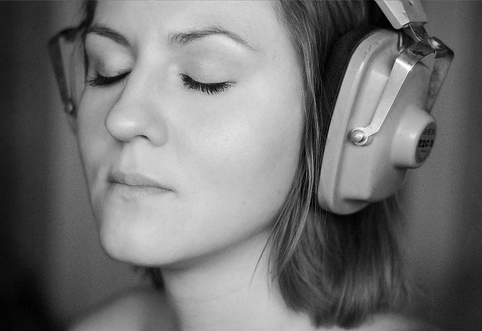 The second study was done at the University of Sussex and examined the impact of a much shorter, yet more specific intervention. In this case, half the participants performed a 7-minute lovingkindness practice: listening to audio instructions, they spent 4 minutes generating and sending love to people who deeply cared for them, and the final 3 minutes directing those warm feelings toward a photograph of a Black person of the same gender as the participant. A control group performed a similarly structured task, spending 4 minutes imagining the physical characteristics of two acquaintances, followed by 3 minutes paying close attention to the physical characteristics of the same gender-matched Black person shown to the participants in the lovingkindness condition (but not generating any particular emotion).
The second study was done at the University of Sussex and examined the impact of a much shorter, yet more specific intervention. In this case, half the participants performed a 7-minute lovingkindness practice: listening to audio instructions, they spent 4 minutes generating and sending love to people who deeply cared for them, and the final 3 minutes directing those warm feelings toward a photograph of a Black person of the same gender as the participant. A control group performed a similarly structured task, spending 4 minutes imagining the physical characteristics of two acquaintances, followed by 3 minutes paying close attention to the physical characteristics of the same gender-matched Black person shown to the participants in the lovingkindness condition (but not generating any particular emotion).
At the end of this brief instruction, participants performed two racial IATs (probing bias against Black and Asian people), and completed a measure of positive emotions. Results showed that for the group who had practiced lovingkindness toward the Black person, implicit racial bias against Blacks got smaller. There was no change in bias toward Asian people, suggesting that the effects were specific to the racial group focused on during practice. In addition, further analysis showed that other-regarding positive emotions such as gratitude and love were a significant factor in the reduction of implicit bias.
This work suggests two conclusions: 1) that a very short emotional induction can change implicit bias toward a targeted group, and 2) that generating other-focused positive emotions is important to make this shift.
Finally, the utility of meditation in reducing bias may not be restricted to lovingkindness practices. A recent study found that people who engaged in 10 minutes of mindfulness meditation showed significantly less discrimination than controls in a “trust game” that involved exchanging money with partners of different races. And in a different group of participants, the same mindfulness intervention reduced racial bias on the IAT compared to controls, supporting the behavioral changes. Interestingly, additional analyses suggested that the reduction in implicit bias stemmed from a “weakening of automatic associations between these groups and negative constructs.” Other analyses from the Kang et al. study found that reductions in psychological stress were a major factor in reducing bias (although only for the homeless group in that case). Thus, its possible that a general stress-reduction effect of meditation may also play a role here. More work will need to further clarify the deeper mechanisms of these changes.
Future Directions
These kinds of studies will need to be extended to determine the potential long-term effects of various forms of meditation. For example, it’s still unknown whether a short-term intervention (of a few minutes or a few weeks) can change implicit bias in a lasting way. Given the decades of constant reinforcement of negative stereotypes, it could well be that when a person stops practicing, the old patterns will re-emerge. It will also be fascinating in future studies to see whether these changes are reflected on behavioral and neural levels.
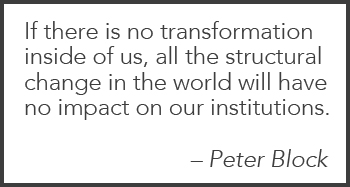 While this research is still in its infancy, these studies point to an exciting possibility for change. As groups organize and work on societal and political levels to move toward racial equality, we should be encouraged and inspired to know that we can also take individual responsibility for our own minds. By engaging repeatedly in mental and emotional practices that are meant to foster attitudes of equality and compassion, we can change the unconscious associations that drive our behavior.
While this research is still in its infancy, these studies point to an exciting possibility for change. As groups organize and work on societal and political levels to move toward racial equality, we should be encouraged and inspired to know that we can also take individual responsibility for our own minds. By engaging repeatedly in mental and emotional practices that are meant to foster attitudes of equality and compassion, we can change the unconscious associations that drive our behavior.
The situation in our culture may seem dire, but the more we learn, the more we see that change is always possible. And it is only by changing ourselves that we change society. In the words of Mahatma Ghandi, “We must become the change we wish to see in the world.”
This essay has been modified from the original version published at courageofcare.org on March 24, 2016. Header image adapted from 123rf.com. Headphone image adapted from flickr user Nickolai Kashirin. Updated July 2020.

Wendy Hasenkamp, PhD
Podcast Host, Mind & Life Institute
Planning Committee Member, Reviewer
Wendy is the host of the Mind & Life podcast, and former Science Director at the Mind & Life Institute. She is a neuroscientist, contemplative practitioner, teacher, and writer who … MORE

Yoona Kang, PhD
University of Pennsylvania
Convening Faculty, Grantee, Reviewer
Yoona Kang’s research investigates psychological and neural mechanisms that support the development and changes in social cognition, emotions, and health outcomes. Her main research interests are in 1) linking social … MORE


